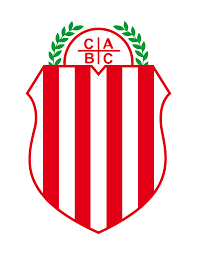
Barracas Central FC is a renowned Argentine football club with a rich history and a passionate fan base. Known for its resilience and community spirit, Barracas Central FC has steadily built a reputation both domestically and in the broader South American football scene. This article explores the club’s historic journey, major achievements, recent developments, and ongoing strategies that keep it at the forefront of Argentine football.
The Origins and Historical Development of Barracas Central FC
To understand the essence of Barracas Central FC, one must delve into its roots. The club, founded in the bustling barrio of Barracas in Buenos Aires, has become a symbol of local pride and sporting commitment since its inception dom88.
The Founding Years and Early Foundations
The story of Barracas Central FC begins in the early 20th century. Established in 1904, the club was initially formed by local workers and football enthusiasts. The founders aimed to create a platform for community gathering and sportsmanship, fostering camaraderie among Barracas residents.
In its nascent years, the club participated in regional tournaments, showcasing a raw but promising talent. The early decades were characterized by persistence amid challenges such as limited resources and intense football competition in Buenos Aires. Despite these hurdles, the club developed a strong grassroots structure, emphasizing youth development and local talent.
The club’s early years also brought about a deep-rooted identity connected to the Barracas neighborhood, which influenced its community-oriented philosophy. Over time, Barracas Central FC began establishing itself within the local football circuits, setting the foundation for future domestic success.
Expansion and Growth in the Argentine Football Scene
The mid-20th century marked a period of gradual expansion for Barracas Central FC. With increasing support from local fans and better administrative strategies, the club started climbing the ranks of Argentine football. It participated in national competitions, refining its playing style and tactical approaches.
During this period, several notable players emerged, often scouted from the local youth system. The club’s approach to nurturing young talents and fostering team cohesion became its hallmark. This era saw Barracas Central FC develop a reputation for resilience, often punching above its weight against larger, more financially robust teams.
The infrastructure grew alongside the club’s reputation. The construction of better training grounds and stadium facilities helped improve the team’s training routines and fan experience. The club’s colors, yellow and black, became a symbol of pride that resonated strongly with supporters.
Turning Points in the Club’s History
What truly shaped the modern identity of Barracas Central FC were the significant milestones and turning points. The club faced relegations and promotions, embodying the fluctuating fortunes typical of many historic clubs.
One of the most crucial moments was its promotion to higher divisions in the 1990s, which placed the club back on the national stage. This era also marked the beginning of more strategic investments and leadership restructuring, ensuring long-term sustainability.
In the early 2000s, Barracas Central FC took a step forward by investing in youth development programs, which produced future stars for the club and even for other prominent Argentine teams. These efforts cemented its image as a breeding ground for talent and further tied its identity to the local community https://dom88z.com/.
The Club’s Role in the Modern Argentine Football Landscape
Today, Barracas Central FC plays a significant role within Argentine football, balancing tradition and modern competitiveness. Amid a landscape that is increasingly dominated by corporate clubs, Barracas Central FC remains committed to its roots. The club actively participates in national leagues, cups, and even international tournaments, showcasing its ambition and resilience.
Its history of overcoming adversity and cultivating local talent continues to motivate ongoing development strategies. The club’s ability to maintain community engagement while competing at higher levels underscores its important dual role as both a sporting entity and a local institution.

